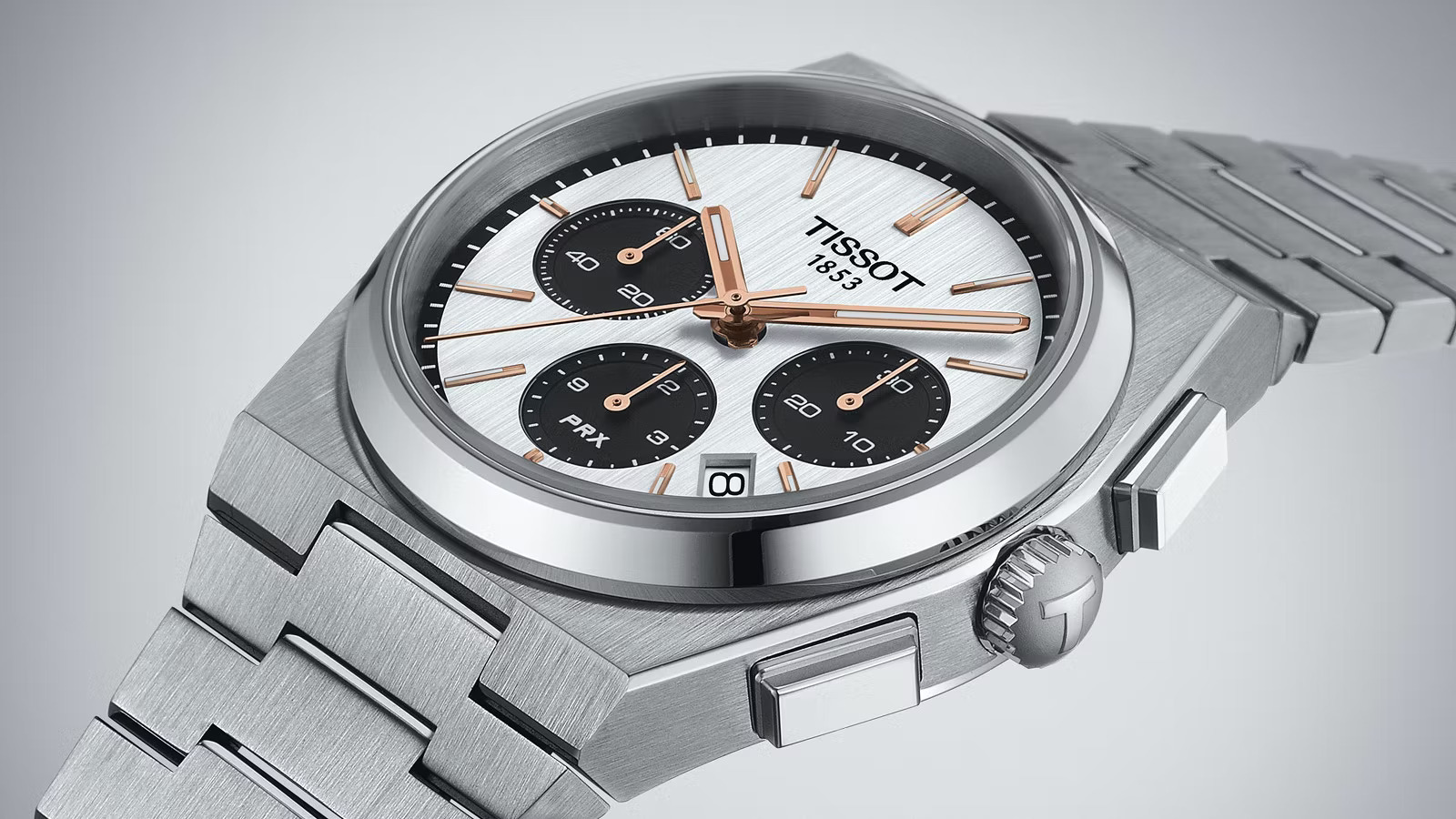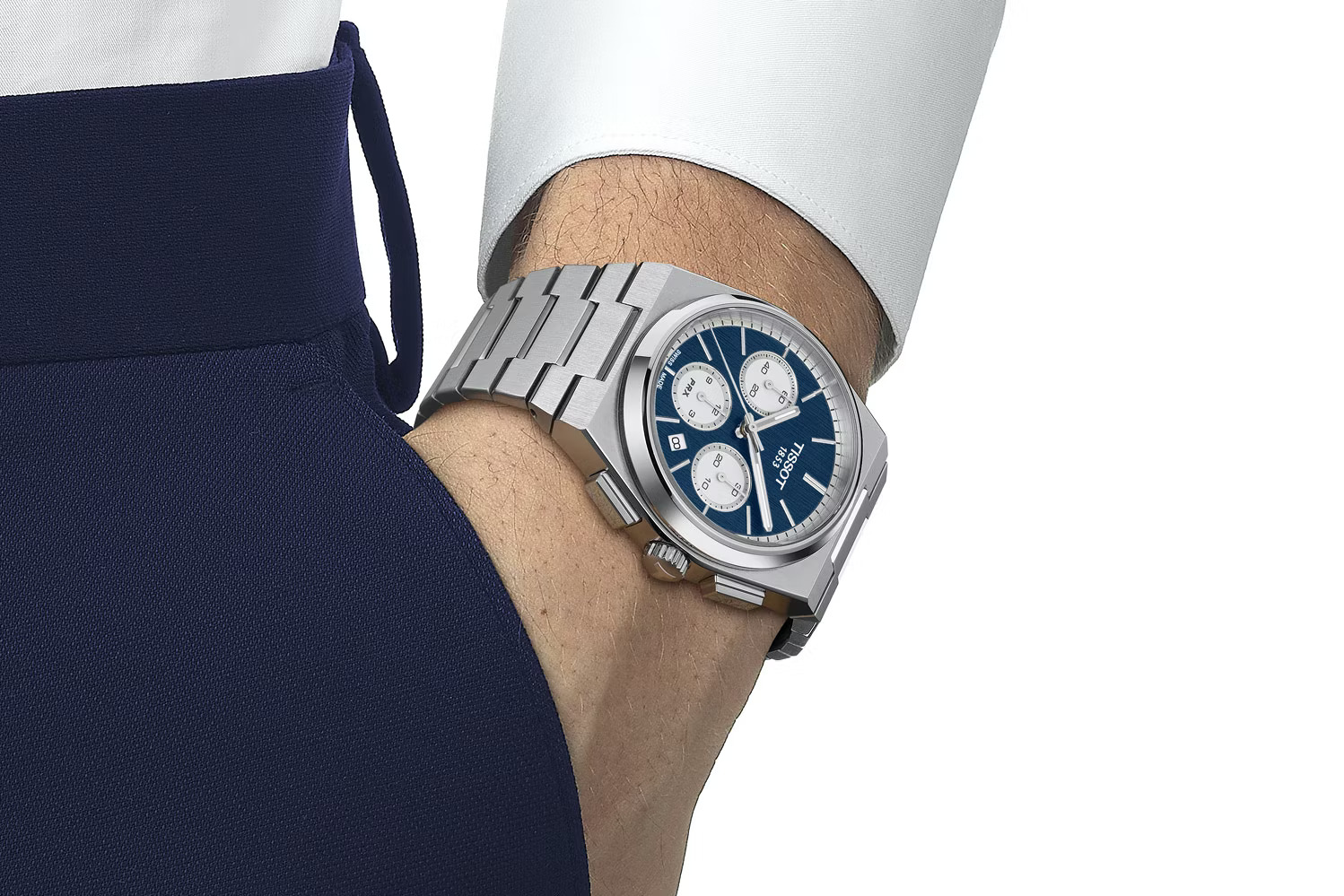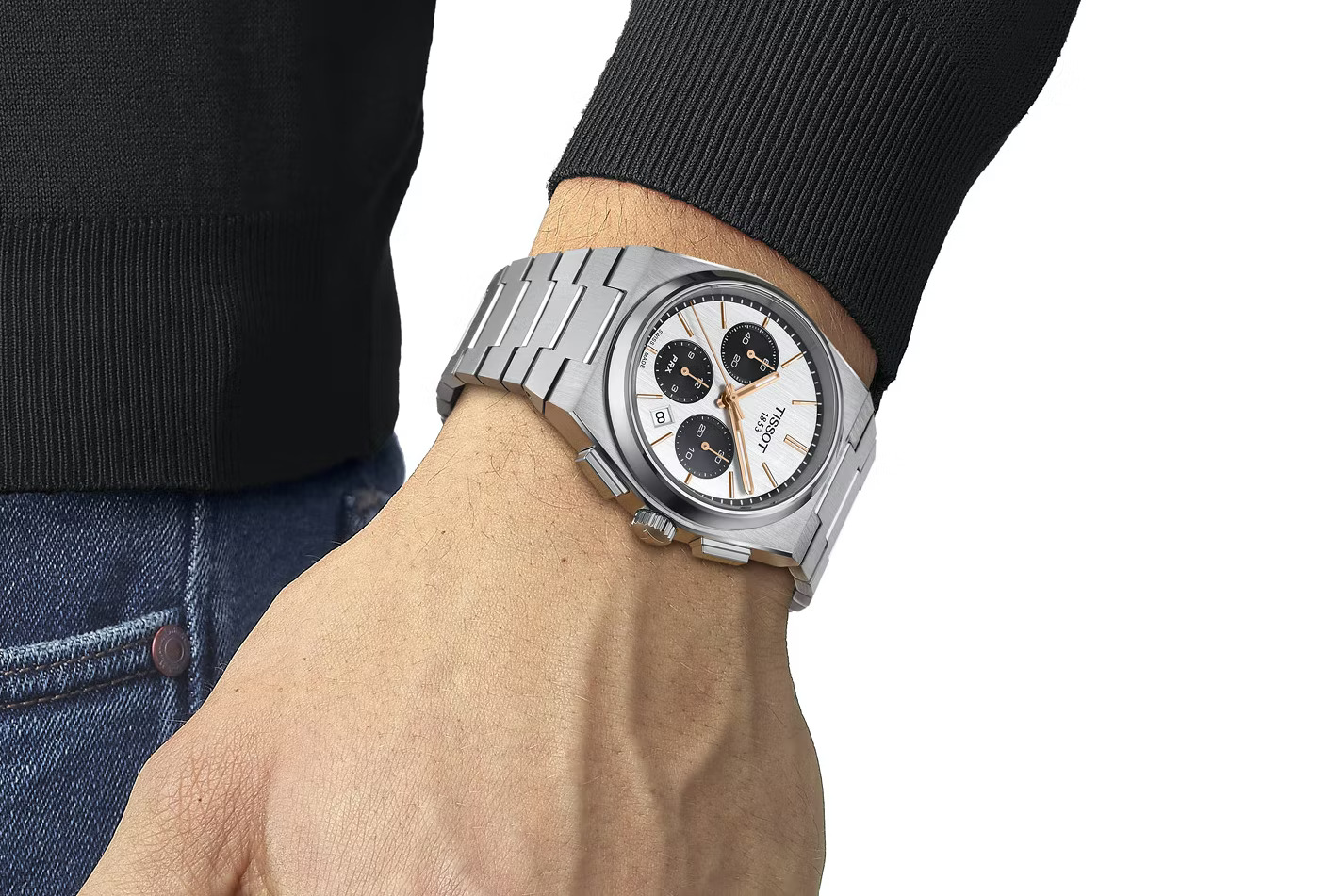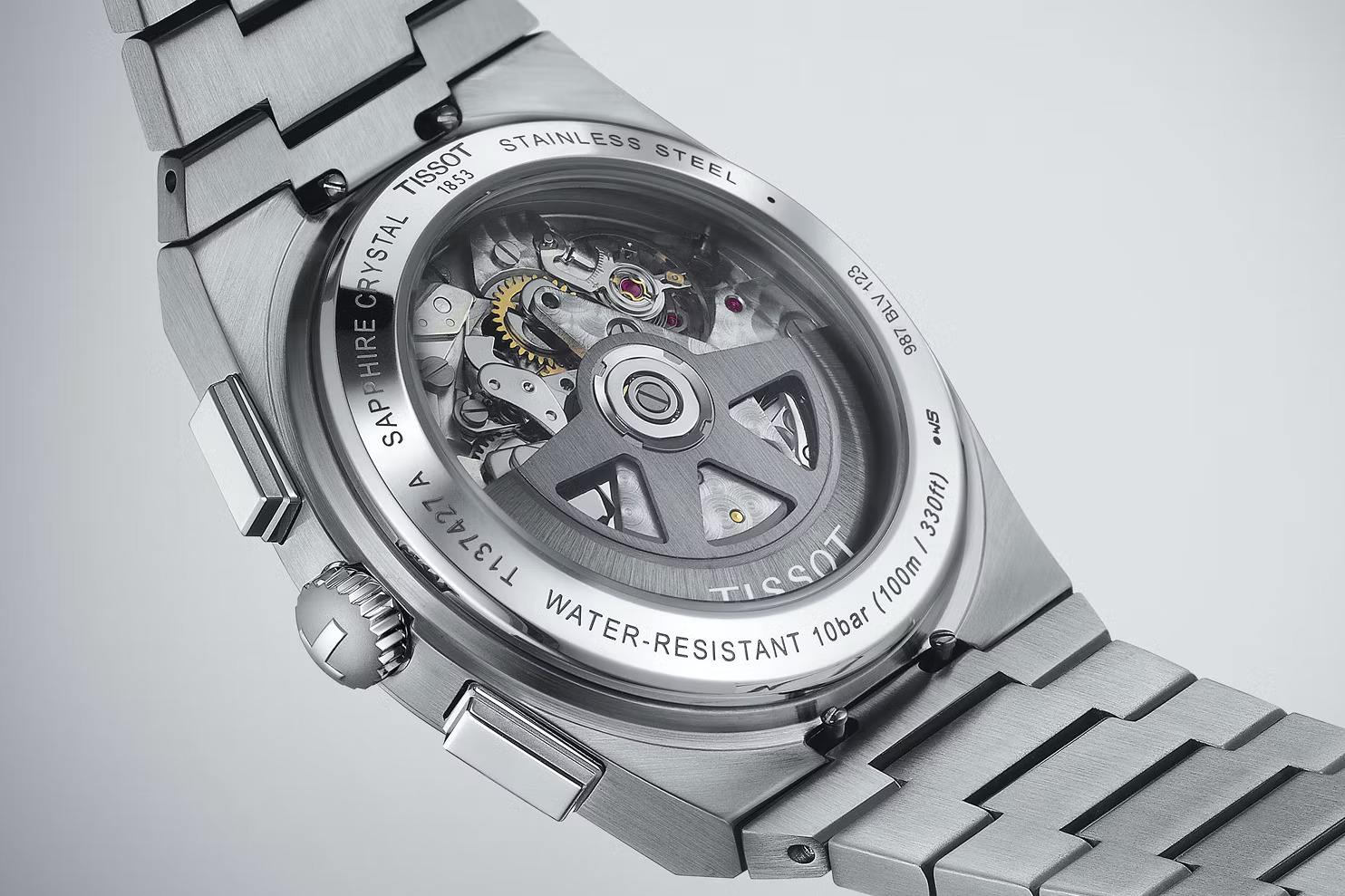BY ERIK SLAVEN
Integrated sports watches are smoking hot these days and Tissot arguably has the best affordable option with the PRX Powermatic 80. Introduced last year following a retro quartz variant (based on the 1978 Seastar), the Powermatic 80 was an instant hit and grounded alternative to grails like the Royal Oak and Nautilus. With a retail price of only EUR 650, the watch offered excellent fit and finish, an 80-hour power reserve and anti-magnetic hairspring. Now we have an automatic chronograph joining the PRX collection and it brings even more to the table for another enticing price.
The new PRX Automatic Chronograph brings a classic 1970s aesthetic and integrated bracelet, both of which are in high demand. The case is larger than the 40mm Powermatic 80, coming in at 42mm in diameter with a thickness of 14.5mm. Classic touches include a brushed finish with polished bevels and a bracelet with flat links. Look close and you’ll see that it isn’t a three-link bracelet, but a cool single-link design that tapers to a triple-blade folding clasp. It also features quick-release levers or what Tissot calls an “interchangeable system.” A sapphire crystal with an anti-reflective coating protects the dial and there’s an exhibition case back as well, keeping this retro piece a bit modern. Flat, integrated pushers at 2 and 4 o’clock look great and water resistance is rated at 100 meters. The X in PRX acts as a Roman numeral for 10, so 10 bars of water resistance. The P stands for Precise and the R for Robust.
There are two dial options, a panda and reversed panda look. Both dials are vertically brushed, unlike the waffle pattern of the Powermatic 80. This is more in line with the original Seastar and (to be honest) less like a Royal Oak. The tri-compax setup comes in blue with silver sub-dials (ref. T137.427.11.041.00) or silver with black sub-dials (ref. T137.427.11.011.00). The silver dial has gold accents, while the blue dial has silver and the silver/gold combo has a dressier aesthetic. Both have applied indices with Super-LumiNova and baton-style hour and minute hands with lume inserts. An angled date window sits between 4 and 5 o’clock, a feature I could’ve done without. The original 1978 model had a date complication, however, so it does stay true to the formula. Looking at the sub-dials, there’s a 30-minute counter at 3 o’clock, 12-hour counter at 6 o’clock and small seconds at 9 o’clock. An outer minute track matches the sub-dials on each model.
The watches are powered by a Valjoux A05.H31 and Tissot has used this cam-actuated movement in prior chronographs. It’s a solid alternative to more expensive column-wheel counterparts. It has 27 jewels, beats at 4Hz with a 60-hour power reserve. It doesn’t quite hit the 80-hour reserve of the time/date model, but it’s certainly nothing to complain about. Seen through the exhibition case back, decorations include perlage and an open-worked rotor.
The PRX Automatic Chronograph retails for EUR 1,495 or USD 1,750, which is more than the Powermatic 80, but still a great value for an integrated, tri-compax chronograph from a major Swiss brand. Both will be available in June 2022.
Visit Tissot here.







